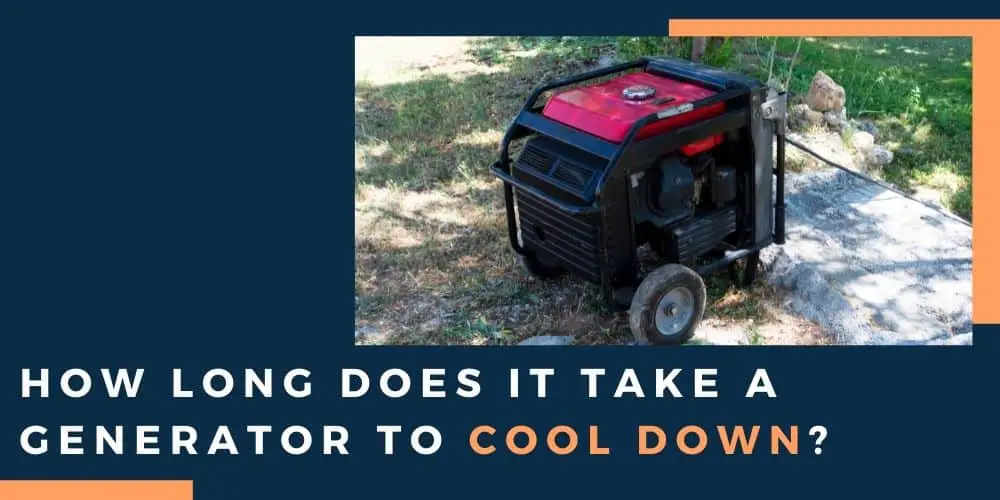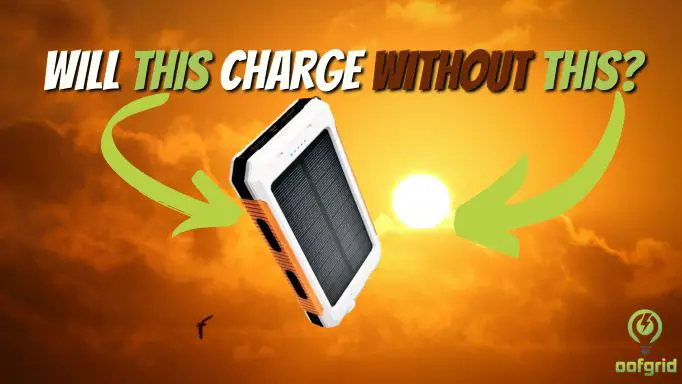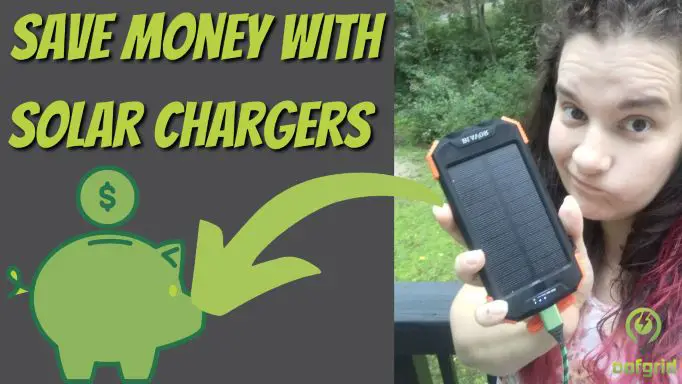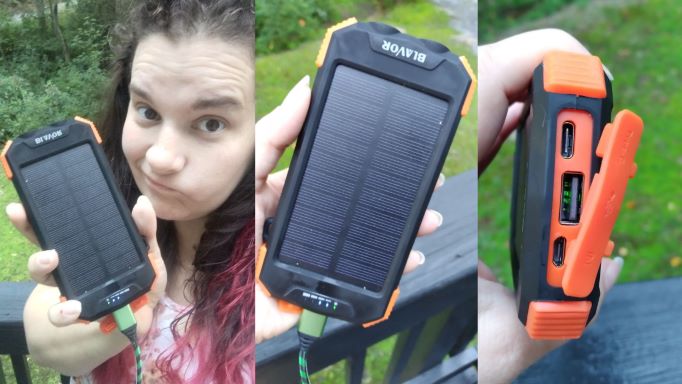Any portable, compact device that contains an internal combustion engine is going to generate a significant amount of heat! This means that once your generator is running, you need to be very careful with handling and refueling it.
Waiting for your generator to cool down is always best, but just how long does it take for a generator to cool down?
Depending on the size, model, power capacity, fuel type, and duration of use, a generator can take anywhere from a few minutes to several hours to cool down adequately to be handled or refueled.
If your generator is overheating, effective cooling of the internal components may take even longer.
In this article, we will explore the temperature regulation of your portable generator and the factors that can make a generator overheat. We will also provide some practical advice on how you can keep your generator cool while it is running.
Contents
What temperature is normal for a portable generator?
In the United States, the safety and performance standards for portable generators have been developed by the American National Standards Institute and the Portable Generator Manufacturers Association.
A portable generator is capable of generating exhaust temperatures of over 500° C (932 °F), but they are carefully designed to reduce the risk of burns and fires with limits set on the surface temperatures of metal and non metal parts.
In an environment with an ambient temperature of 20° C (68 °F), metal parts of the generator that are handled should have a maximum surface temperature of 50° C (122 °F) and non-metal parts 70° C (158 °F). Paneling and contoured portions of the generator can have a maximum temperature of 90 ° C (194 °F). Insulation temperature limits are in the range of 115 (239 °F) to 190 ° C (374 °F).
All generators have the potential for overheating.
You may be looking for how long it takes for a generator to cool down because you are worried that your generator is running a little hot.
It is, of course, normal for a generator to radiate a significant amount of heat, especially if has been running for a long time, but you should be aware of overheating and how to tackle it effectively.
Prolonged overheating of your portable generator will damage it.
When a generator overheats, the alternator not only heats up rapidly but is also capable of causing the insulation of the windings of the generator to burn out.
Insulation is often the first thing to be damaged by overheating and softened or melting material on the windings can ignite if the overheating is not addressed.
Other sensitive parts like the brushings and slip rings can become so hot that they unsolder.
Excessive heat is also able to melt bearings, warp the rotor and various valves, and do fatal damage to the radiator core.
The combination and extent of heat-related damage to the parts of a generator often leave it inoperable after an episode of overheating. In most instances, it is cheaper to buy a new generator than procure and install multiple replacement parts.
These are key problems that may prevent your generator from cooling quickly.
[A] Low coolant levels
A liquid-cooled generator is essential to help regulate the temperature of the generator’s moving parts, facilitating heat transfers away from components that can become overheated. If your generator has suffered a leak of coolant from the gasket or encounters blockages that prevent its circulation, the generator will start to overheat.
[B] Low oil
Oil is vital for lubricating the moving parts of the generator engine so that it performs optimally. If the engine runs on little to no oil it can lead to the components wearing out and overheating of the generator as it works harder to maintain its output.
[C] Dirt and debris on the exterior of the generator engine.
It’s easy to overlook grime build-up on your portable generator, but the layer of dirt will act as an insulator preventing the normal dissipation of heat. This means that the generator will take far longer to cool down.
[D] A broken-down fan.
Just like your laptop, your generator’s fan is key to keeping the unit cool and functional. Dirt and grime can also clog the fan meaning that this vital cooling mechanism is unavailable.
[E] Excess fuel in the generator.
Using more fuel in the generator than required, especially diesel which burns at a hotter temperature can cause a generator to run hotter as the fuel usually has to be used up before shut down.
[F] Clogging of the generator fuel injectors.
Blocked fuel injection is a well-known cause of overheating of a generator as the blockage makes it work much harder to maintain its output.
[G] Blocked air filters.
The air filters on your generator engine draw fresh cool air into the system to regulate its temperature.
[H] A blocked or damaged exhaust.
If the exhaust has been obstructed or warped in some way, the hot exhaust fumes cannot exit the generator efficiently leading to a temperature rise.
[I] Mechanical faults may mean that cooling mechanisms do not kick in.
Faulty gauges on the generator may mean cooling systems are not triggered by a high temperature.
[J] Generator overloading is a prime cause of overheating.
It is very easy to connect more and more appliances to a generator or underestimate the capacity of generator you need for the equipment you want to run.
Portable generators aren’t smart and will attempt to service everything that is connected, even if that is punching above its weight.
This is a bad situation as it damages the generator and overheats it. You can learn more about overheating in portable generators in our article: “Do Portable generators have overload protection? ”
Where you locate your generator may also help cool your generator more quickly
The external environment has a major impact on the thermal control of a portable generator. You may be able to change some of these conditions to improve heat dissipation from your generator so it cools down more quickly. Here are some environmental factors to consider:
- External temperature: If your generator is working hard on a hot sunny day it will heat up rapidly and you will find it takes a long time to cool down after use. Higher air temperatures lead to lower air density which can affect the availability of oxygen to the generator. This makes the generator work harder to deliver power and increases the potential for it to overheat.
- Altitude: Altitude similarly can lead to a reduced availability of oxygen to generator, precipitating overwork and excess heat.
- Airflow: Using your generator indoors is not only advised because of the carbon monoxide risk but also a lack of airflow will mean that the heat generated by the generator has nowhere to go.
- Other equipment that is radiating heat: Having your generator in close proximity to heat emitting equipment is going to raise the temperature of both pieces of equipment.
Strategies for keeping your generator cool
If you want to get the temperature of your portable genny under control, there are a number of quick and practical steps you can take:
- Never overload your generator. Calculate your power requirements and stick to them connecting appliances one at a time once the generator has started running.
- Always keep the coolant and oil in your portable generator fully topped up. Use good quality products.
- Keep you generator in a sheltered, but well ventilated area while it is running, with plenty of airflow.
- Ensure that your exhaust is not obstructed in any way.
- Keep the generator from equipment that emits heat.
Rounding up
There areso many factors that affect the temperature of a portable generator but we hope you can see that there is a lot you can consider and do when it comes to keeping your generator cool.
If you are waiting to refuel Never pour fuel into a hot generator as it can ignite or worse still explode. Turn off the generator and wait for it to cool down completely.
Remember, regular servicing and routine running of your generator from time to time will also troubleshoot the major causes of overheating in your generator and keep it working more efficiently for longer.






